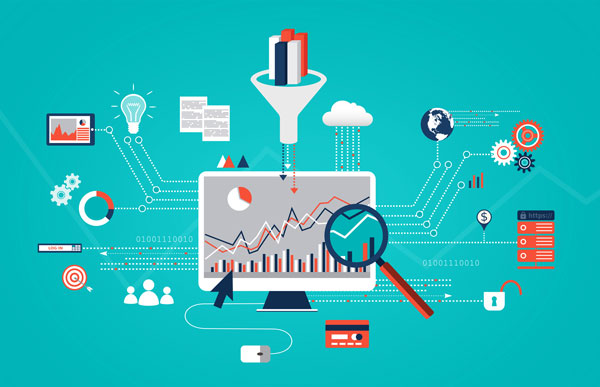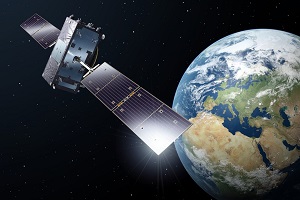Communications platforms as a service (CPaaS) have lots of different names depending on what the service providers and vendors choose to call them but the principle of offering a standardised, global connectivity platform that is composed of network access and a management system is of appeal to IoT service providers, writes George Malim.
If you think of a company such as Caterpillar or JCB that offers their excavators as a service in markets across the world, enabling new business models such as charging per scoop of an excavator or per lift of a loader is one of the main attractions of the Internet of Things (IoT). Although this represents a significant transformation to their traditional business of manufacturing heavy equipment, it still puts them in the same industries with their equipment providing the same functionality. Only the business model has really changed.
However, to get to this new business model IoT has to work. Data has to be collected, analysed, recorded and reconciled into billing and service statements. All of this relies on uninterrupted network connectivity which could be enabled by many different technologies and service providers. However, if you’re JCB or Caterpillar, what you’re good at is building machines, you’re not a communications service provider (CSP) and you don’t want to become one.
In order to enable their new business in IoT, specialised companies don’t want to have to do deals with individual mobile operators in the regions or even countries that they operate in. They don’t want to have to manage relationships with satellite providers alongside low power wide area network (LPWAN) providers and the cellular players. They simply want the capability to add or remove connections according to their business needs and be charged accurately for the connectivity their offerings consume.
A CPaaS has the potential to perform this role by bringing together multiple connectivity providers and providing the communications management system that oversees and ensures the connectivity provided is done so as expected by the IoT service provider. However, as is common with new product introductions, some confusion exists as to what constitutes a CPaaS, which has been used by individual service providers to describe their ability to offer their cellular network in more than one country, through to comprehensive offerings that provide an overlay over multiple other networks.
“CPaaS is a cloud-based solution platform that enables CSPs to include real-time communications features – voice, video and messaging – in their own applications without needing to build back-end infrastructure and interfaces,” clarifies Angel Garcia Barrio, the head of product management at WING, Nokia’s Worldwide IoT Network Grid. “CPaaS can support both human and machine communications on a single, reliable network. In IoT, CPaaS supposes a revolution in terms of how to define, develop and operate the communications infrastructure. Instead of investing in advance and taking time to deploy the system, CPaaS allows the CSPs and enterprises to rapidly benefit from a specific, reliable, shared network, fully operated, with web interfaces and application programming interfaces (APIs) to manage the connectivity and pre-built applications. From the business model perspective, CPaaS provides pay-as-you-grow models, avoiding the risk of investing in their own infrastructure.”


James Wickes, the chief executive and cofounder of visual data specialists Cloudview, adds: “For me, CPaaS means a secure, cloudbased platform which enables the intake, management and storage of data from multiple sources in multiple locations across multiple organisations. Once data is within the CPaaS platform, the data can be integrated, analytics applied either in the cloud or at the edge, and results securely accessed by authorised users, again from any location. Another term might be a platform for IoT – or in Cloudview’s case, a platform for visual IoT.”
CPaaS benefits are applicable to many applications and Barrio sees a wide range of areas in which they will drive efficiencies and enable services. “There are many industries and markets that benefit from the CPaaS approach,” he says. “Connected goods with sensors embedded in all types of retail and commercial items has introduced the growing need to simplify and maintain connectivity for these high-value products wherever they are delivered and installed in the world. The manufacturer doesn’t want to be burdened with managing such a complex process and prefers to rely on a multi technology – cellular and satellite, multi CSP, cost-effective service to track the connected good effectively.”
Barrio also cites Industry 4.0, with increasingly intelligent and data-intensive factories, and connected cars as additional areas in which CPaaS are in demand.
“Connected cars manufactured in one country are often delivered to subscribers in different countries, so automotive companies need ways to ensure the consumer can simply and easily establish the connection upon purchase,” he adds. “The end-users want to be able to consume these connected services across networks and countries, without having to worry about excessive roaming charges or significant network latency causing issues.”
With the need for CPaaS starting to become established, the next question becomes who should be the providers of CPaaS. Mobile operators would argue that, with their connectivity capability, they already have many of the capabilities in place. However, competitors would argue that they would struggle to be vendor agnostic when operating in markets in which they have their own networks.
“The best people to provide CPaaS are third parties who are experts in cloud, data management and storage,” says Wickes. “That may not be telecoms providers, mobile operators or public cloud providers – I see such companies partnering with CPaaS experts to add new services to their portfolio. The value is in the integration of data from multiple sources, not the actual connectivity.”
Barrio concurs but doesn’t count out the CSPs. “CPaaS is not just about basic connectivity,” he says. “The CPaaS offering should enable global, seamless connectivity across network technologies and geographical borders for Internet of Things. The infrastructure and services have to be compliant to various regulations in different markets.”
“CSPs are able to provide a fully integrated endto-end communications service, but it is the large infrastructure providers, such as Nokia, who can support them creating a broad CPaaS portfolio for better time-to-market,” he adds. “WING is combining an innovative strategy and a huge investment in the deployment of the largest worldwide network with the direct access to the technology of the different Nokia business groups and the innovation of Nokia Bell Labs. Nokia WING offers a fully integrated, global managed service for IoT connectivity enablement across multiple technologies and geographical boundaries for CSPs and their enterprise customers.”
The elements in that sort of fully-integrated service go far beyond just the connection. “A CPaaS offering should include the gateway, secure storage, a control system that governs data capture, storage, management and provision as well as application programming interfaces (APIs) to enable analytic software to connect and use data,” says Wickes. “This then enables analytics specialists to build apps. If CPaaS is going to be used for real-time analysis then in my view it should be network agnostic.”
The complexity is highlighted by recognition that IoT can never be a one-size-fits-all proposition. There are too many variables at play for that. “It is quite important that the IoT communication solutions fulfil the requirements of the service providers’ applications in the different environments,” says Barrio. “For example, a utility will need to connect points in different areas to efficiently manage the grid. All the information should be sent in a seamless, reliable, cost effective and secure way, but to provide the service, a unique type of communication will not cover all the possible scenarios.”
“Cellular is a very flexible and cost-effective technology but can be complemented by fixed technologies if higher bandwidth or quality of service (QoS) is required, low power wide area (LPWA) networks are needed in the case of low power availability or coverage constraints and satellites are needed in the middle of nowhere. CPaaS has to manage the different types of communication to support the customer needs.”










